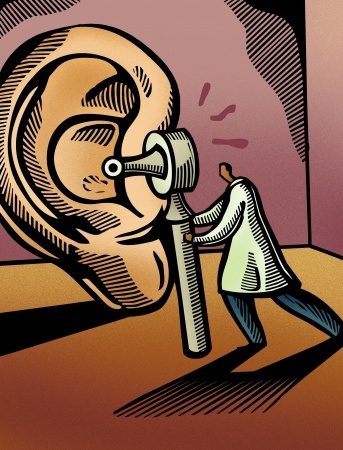During my zookeeping and environmental education career, I have interacted and worked with a variety of animals, including brown bears, wolverines, red foxes, moose, camels, mountain goats, dolphins, sea lions, raccoons, porcupines, snakes, raptors and ravens. I am also a young adult author, and my debut novel ESSENCE was released in June 2014 by Strange Chemistry Books. Ask me anything!
Hi Rissa! I have never personally worked with elephants, but a few of my good friends have. Shoot me an email at lisaannokane(at)outlook(dot)com, and I will hook you up with one for your report!
Oh, totally! This happens all the time, and it never gets less embarassing. I volunteered as a tour guide at my local zoo in high school, and I always stammered through an awkward explanation, like the tigers were "wrestling" or "playing" or whatever. Nowadays, I tend to be a little more honest, though I usually try to minimize and move on as quickly as possible. (Ironically, the parents usually laugh harder than the kids, but we DO share inside jokes on occasion!)
Hi Alexa! I have never worked at Animal Kingdom before, but I can certainly do my best to answer your questions. Please send them to lisaannokane(at)outlook(dot)com, and I will get them back to you as soon as I can. Thanks!
I'm glad my answer was helpful, and sixteen is actually the perfect age to begin getting hands-on animal experience. I would highly recommend volunteering at your local zoo if you have one; teen volunteers often help with camps, man the petting zoo, take tickets, answer guest questions, etc. It may not be the most glamorous job ever, but you will gain invaluable experience, and you will begin to understand how the behind-the-scenes portions of the zoo operate.
(If there are no zoos in your area, you can also gain relevent experience at animal shelters, horse stables, vet offices, etc.)
If you like what you see and decide you would like to pursue zookeeping as a career, I would highly recommend enrolling in college and majoring in a life science of some sort: biology, psychology, environmental science, etc. Once you are enrolled in school, you can begin applying for summer zoo internships. Most are unpaid, and they are a huge time commitment, but they are the best way to pave your way into full-time employment once you graduate.
Best of luck to you, and please let me know if you have any more questions!
Audiologist
 How come people with hearing aids still can't seem to hear?
How come people with hearing aids still can't seem to hear?
Casino Marketer
 What's the most unethical thing you've seen casinos do to "part you from your dollars?"
What's the most unethical thing you've seen casinos do to "part you from your dollars?"
Chick-fil-A General Manager
 What's the back-story behind the cow mascot and eat-mor-chikin campaign?
What's the back-story behind the cow mascot and eat-mor-chikin campaign?
Hi Bethanne, I actually haven't ever experienced this. I'm sure it still happens, but I think the public is much more educated about the role of zoos and aquariums in the United States than they ever have been before. Gone are the days when people associate accredited zoos with crumbling, road-side circus attractions, and I think that's because the public finally understands the importance of zoos as educational, research and conservation entities.
The public is also way more aware that accredited zoos don't actually go out in the wild and harvest perfectly healthy animals; we simply serve as a home for animals that have been deemed "unreleasable." This means our animals have either been orphaned, injured or raised in human care, and it has been determined that these animals most likely won't survive in the wild without us.
Hi Jill! This is a great question. I think the first step is definitely establishing realistic expectations for each particular animal. (A domestic camel, for example, is going to initially be much more apt for enthusiastic interactions than a mountain goat.) You can research other zoo's behavioral plans to see what worked and what didn't work for them, and you can also do your homework and take a look at each animal's natural history to get a clue how it will respond to your presence.
Once you have established a basic plan for your interactions with your new animal, your next step will be to be consistent--and patient! Successful interactions, connections, and relationships vary widely between species and individual animals, and there is no magic number for how quickly or slowly these relationships will develop.
To make things even more complicated, sometimes an animal will NEVER respond to you the way you think it should. In my experience, individual animals have demonstrated preferences for certain keepers versus others in ways that defied logic. Maybe it's your smell, maybe it's the sound of your voice... No matter what you do, some animals just aren't going to connect with you. That's why it's so important to keep an open mind--and to pay strict attention to what your animal is actually telling you, not just what you think it should be telling you.
At the end of the day, it's exciting to witness which ones you connect with versus which ones you really don't. Sometimes, they surprise you!
I'm not certain I know how to accurately answer this question, as each animal is typically owned by the zoo from which it escapes--with a few exceptions for breeding loans, etc. Also, each animal is generally apprehended before too much time passes, so it is almost never necessary to report an escape to an outside owner.
If, for some reason, a breeder loan animal (or other outside animal) either went missing or was forced to be put down during an escape, there would typically be a clause in that animal's loan contract that would detail how the receiving zoo would respond to this--whether it is a no-fault situation, a situation where a replacement animal would need to be acquired, etc.
(Again, this happens to infrequently that it's almost never necessary to actually deal with it. Even still, I suppose it's better to be safe than sorry.)
-OR-
 Login with Facebook
Login with Facebook (max 20 characters - letters, numbers, and underscores only. Note that your username is private, and you have the option to choose an alias when asking questions or hosting a Q&A.)
(A valid e-mail address is required. Your e-mail will not be shared with anyone.)
(min 5 characters)
By checking this box, you acknowledge that you have read and agree to Jobstr.com’s Terms and Privacy Policy.
-OR-
 Register with Facebook
Register with Facebook(Don't worry: you'll be able to choose an alias when asking questions or hosting a Q&A.)